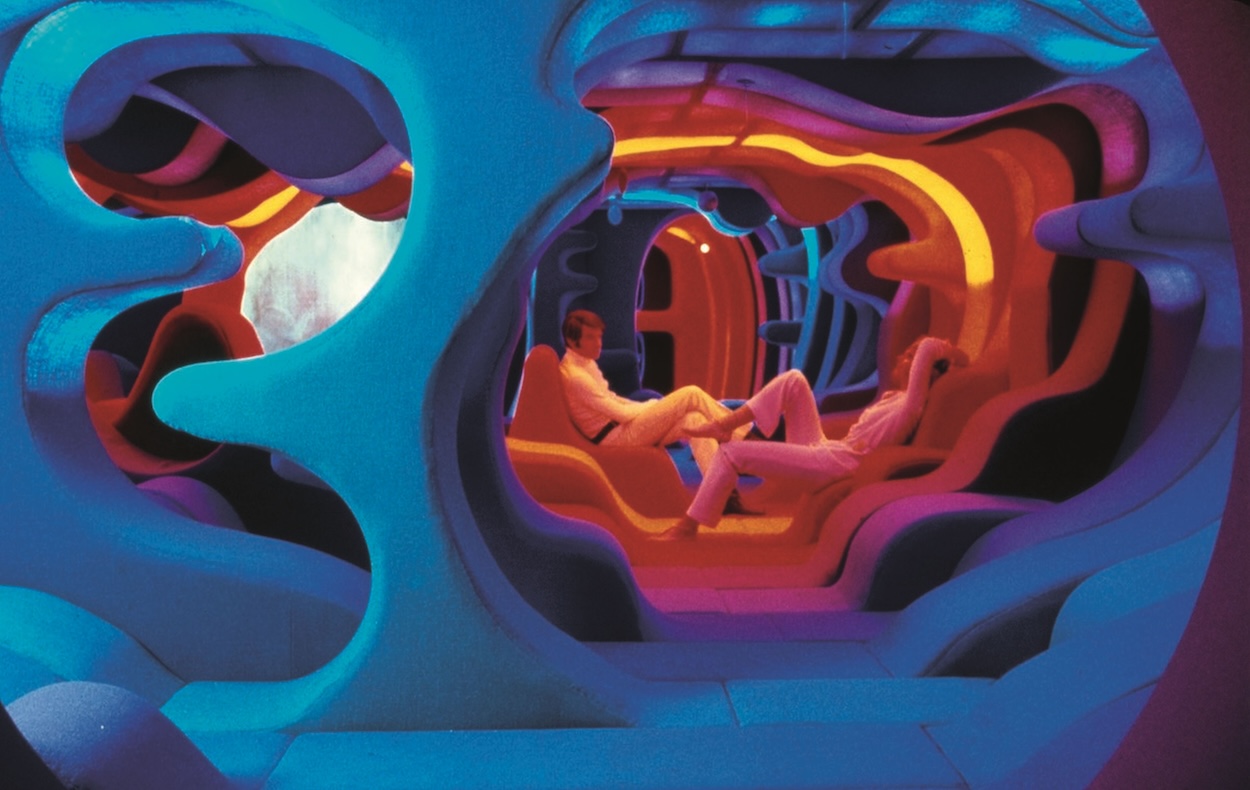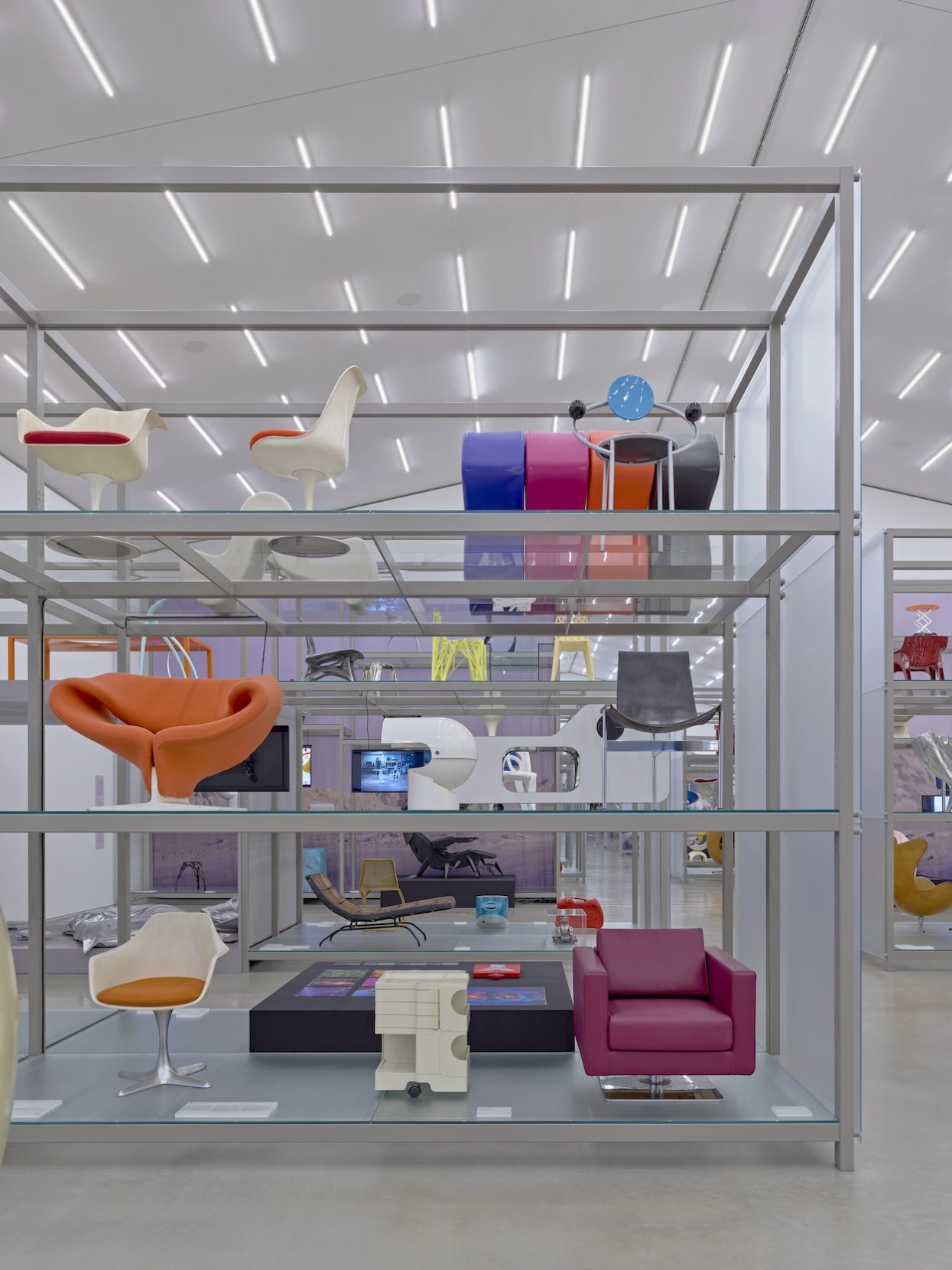Filmmakers were imagining future fictional worlds soon after the medium’s advent at the dawn of the 20th century. Over the next few decades, science fiction not only saw a rapid ascent in film and literature, but crept closer to reality as satellites shot into space and aeronautical technology took off. Meanwhile, what we now call the Space Age was finding numerous expressions within design thanks to Gae Aulenti, Eero Aarnio, Luigi Colani, Joe Colombo, and Verner Panton dreaming up furnishings whose organic shapes and shiny plastic surfaces looked straight from the future. Furniture that reflected the technology of space travel was also landing on the silver screen, notably in Stanley Kubrick’s opus 2001: A Space Odyssey (1968), in which Olivier Mourgue’s undulating Djinn loungers furnished the rotating Hilton.
Design’s relationship with science fiction informs “Science Fiction Design: From Space Age to Metaverse,” a newly opened show at the Vitra Design Museum, which pulled more than 100 objects from its expansive archives into a futuristic scenography devised by Spanish artist Andrés Reisinger. More examples from film abound: Aarnio’s Tomato Chair in Men in Black (1997), Marc Newson’s Orgone Chair in Prometheus (2012), and unexpected ones like Charles Rennie Mackintosh’s Argyle Chair in Blade Runner (1982). Beyond film, though, the show examines how that dialogue persists today. Besides continually applying new technology to help solve pressing social problems, designers are also imagining innovative solutions on platforms like the metaverse, which are mostly free from physical constraints.



